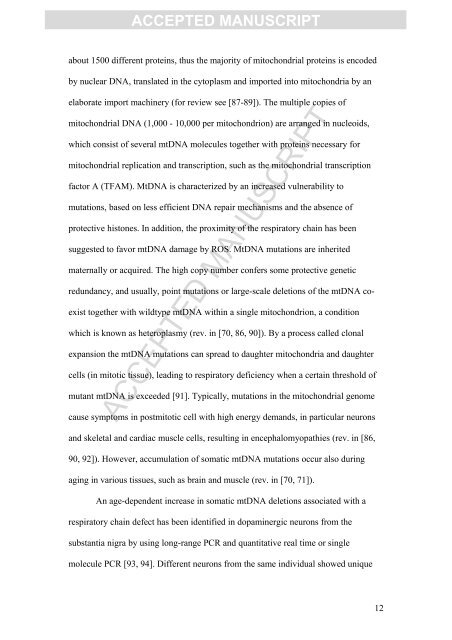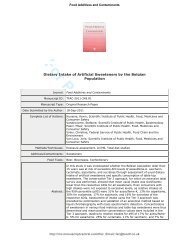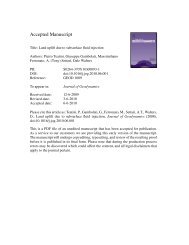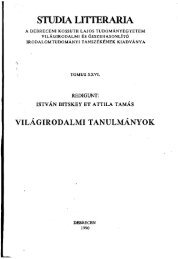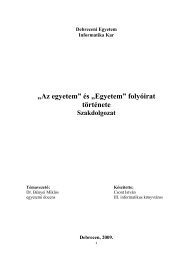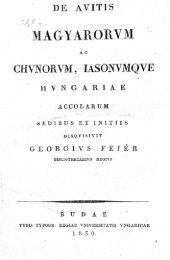accepted manuscript
accepted manuscript
accepted manuscript
You also want an ePaper? Increase the reach of your titles
YUMPU automatically turns print PDFs into web optimized ePapers that Google loves.
ACCEPTED MANUSCRIPT<br />
about 1500 different proteins, thus the majority of mitochondrial proteins is encoded<br />
by nuclear DNA, translated in the cytoplasm and imported into mitochondria by an<br />
elaborate import machinery (for review see [87-89]). The multiple copies of<br />
mitochondrial DNA (1,000 - 10,000 per mitochondrion) are arranged in nucleoids,<br />
which consist of several mtDNA molecules together with proteins necessary for<br />
mitochondrial replication and transcription, such as the mitochondrial transcription<br />
factor A (TFAM). MtDNA is characterized by an increased vulnerability to<br />
mutations, based on less efficient DNA repair mechanisms and the absence of<br />
protective histones. In addition, the proximity of the respiratory chain has been<br />
suggested to favor mtDNA damage by ROS. MtDNA mutations are inherited<br />
maternally or acquired. The high copy number confers some protective genetic<br />
redundancy, and usually, point mutations or large-scale deletions of the mtDNA co-<br />
exist together with wildtype mtDNA within a single mitochondrion, a condition<br />
which is known as heteroplasmy (rev. in [70, 86, 90]). By a process called clonal<br />
expansion the mtDNA mutations can spread to daughter mitochondria and daughter<br />
cells (in mitotic tissue), leading to respiratory deficiency when a certain threshold of<br />
mutant mtDNA is exceeded [91]. Typically, mutations in the mitochondrial genome<br />
ACCEPTED MANUSCRIPT<br />
cause symptoms in postmitotic cell with high energy demands, in particular neurons<br />
and skeletal and cardiac muscle cells, resulting in encephalomyopathies (rev. in [86,<br />
90, 92]). However, accumulation of somatic mtDNA mutations occur also during<br />
aging in various tissues, such as brain and muscle (rev. in [70, 71]).<br />
An age-dependent increase in somatic mtDNA deletions associated with a<br />
respiratory chain defect has been identified in dopaminergic neurons from the<br />
substantia nigra by using long-range PCR and quantitative real time or single<br />
molecule PCR [93, 94]. Different neurons from the same individual showed unique<br />
12


